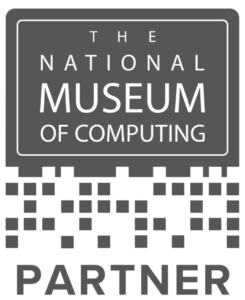Over the last 15 years I’ve worked with a lot of businesses – from big brands to small names – and the same service management and business challenges are present in all of them.
A lot of it is basic and usually the issues are known (yet unresolved) amongst IT teams. Certainly, the people I’ve had the honour of working with were always really smart and highly driven. The issue is that they could never get the resources they needed to keep up with demand and fix obvious issues and also innovate. These issues could be anything from sorting out their CMDB, to cleaning data, integrating tools, or simply just reworking their service catalogue to be more “business-friendly”.
They’d often get internal support from IT leadership, which was reassuring and helpful, but there was always a blocker outside of IT that led these driven people to stopping trying. Senior meetings would defocus the good stuff and zoom in on the negative aspects like when they missed a KPI, or they would focus too much on cost but never seemed able to talk about the value or benefit.
The Root of the Problem
It’s my observation that IT and business executives more often than not don’t speak the same “language” and usually have different perspectives on what’s needed. The business wants skills to help them be competitive and IT wants to write requirements documents, make a project, define responsibly, build a catalogue, etc, and by then were already too late because “some cloud vendor already did it”.
And that’s an important point too, because the invention of cloud technologies has made it even easier for other areas of the business to bypass IT, which is often perceived as slow and cumbersome to deal with. It also makes it easier to see value for money and remove the headache of dealing with IT.
We Need to Change
This is why I believe that IT needs to reframe what they do in modern business terms, and more importantly, HOW they do it.
The entire concept of IT as a separate service provider simply makes no sense – it needs to get involved and become part of the team. However, the challenges that this represents is breaking with age-old dogma from “best practices”.
We in IT constantly separate ourselves from the rest of the company, yet we then complain when the business goes off and does its own thing. It’s no wonder that we’re a nightmare to work with. We keep this mantra of IT as a services organisation and we spend time convincing everyone else that we’re right, when quite frankly we’re not! We’re an internal technology capability that needs to support business outcomes.
With all that in mind if IT was to shift to a different mindset – one of internal collaboration – it would be speaking in business terms, which would gain more support from executives.
Evolve or Die
Quite simply, in order to win the battle for relevance, we need to win over the conversation and start helping the business improve quality.
I define quality in line with the dictionary as I think it’s better than just service quality and everyone already gets it. A business is a system of many complex components with many stakeholders, therefore to only measure service quality is missing the bigger picture.
Alan Nance’s recent post regarding the battle for relevance was brilliant and very close to my own thoughts with regards to changing the IT paradigm. As an industry we’ve had over 30 years of IT best practice and yet we still see the same issues that we always have. It led me to ask the question on LinkedIn “Is IT Dead?” , which proved to be a hot topic.
Most comments were aligned with this idea, both from IT and business people alike which quite frankly is astonishing. We’re all reaching this point together and looking for something that will disrupt IT. Best practice has kept us straight for 30 odd years but caused more challenges, and in my opinion no longer fits with modern life – that of being more collaborative, more agile, more rapid in how we do things, and how we change the way we do things.
Moving software to the cloud and server-less infrastructure has become a far more attractive proposition to businesses because they can see value in it and they manage costs better without IT slowing them down with process. A good friend of mine recently said when looking to build innovative technology to support the business “anyone but IT people” – they just don’t get the point of what we’re doing with technology and keep referring to outdated practices that we don’t understand.
So, if you want to win the battle even as a service management professional you’re going to have to kill off a few sacred cows and become something the business wants.
Watch this space.

Jonathan Boyd
Jonathan has been in IT for over 17 years across many roles and organisations with a wealth of experience. He is laser-focused on bringing about a modern era for business enablement from technology and challenging accepted practice. Jonathan is driving the UK growth of the IT Quality Index and intellectual property interests of Q4IT and is a member of the ITSDFI board. He supports innovative technology businesses looking to gain momentum in the UK and EU with sales and consultancy. A real supporter of itSMF Jonathan is working to create a new ecosystem of partners and members to help increase value to our industry. Admittedly spends way too much time in the office and not nearly enough getting out and about exploring with his family, but an all-around decent guy.


